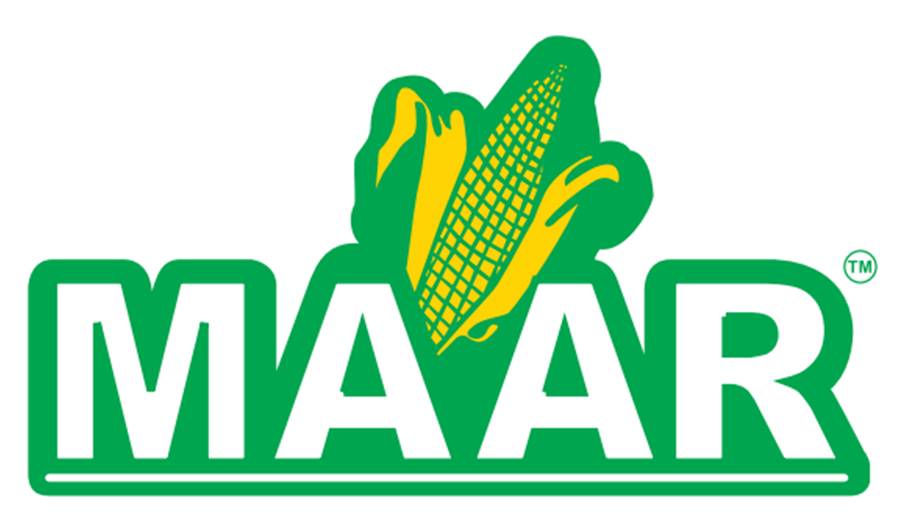Maize Starch
Maize starch is derived from maize, which is commonly known as corn.
Maize starch is a granular, odourless, tasteless, white powder. Starch is a group of carbohydratesabundant in the seeds of cereal plants and in bulbs and tubers.
Starch in its untreated form is known as native starch and is used in the food, pharmaceutical, textile, paper, adhesive and various other industries.
Textile Industry
One of the most common uses of Maize Starch is in the textile industry. Maize starch provides stiffness and adds weight to febric. Starch is also used in conjunction with thermoplastic or thermosetting resins to obtain a permanent finish. In textile industry, starch is used in sizing to strengthen the warp yarn, in finishing and changing the appearance of fabric after it is bleached, dyed or printed, in printing and increase the consistency of printing pastes. Also starch is used as a component in finishing agent to glaze and polish sizing thread.
There are many advantages of using Maize Starch in the textile industry such as the following:
1. Maize Starch has low ash and protein content.
2. Maize Starch does not thin down during the process of sizing (whereas tapioca starch breaks down substantially on cooking, which results in an uneven pick up on the yarn).
3. Maize Starch unlike other starches does not require steeping and long cooking time and is transformed into a smooth paste within an hour or in even lesser time under pressure-cooking.
4. Maize Starch has uniform viscosity, from lot to lot, ensures uniform pick up and penetration into the interstices of yarn to ensure good weaving performance.
5. Maize Starch does not foam saves the requirement for antifoaming agents as it is pH is maintained in the neutral range (tapioca starch has high pH it foams and requires antifoaming agents).
6. Maize Starch is easily removed during the normal process of de-sizing.
Food and Beverage Industry:
Maize Starch is important in the food industry as its viscosity, opacity, binding capacity, improving texture and thickness helps improve the taste and texture of food. It can also help form gels, act as a suspension stabilizer and a bodying agent in baking It is used extensively worldwide in the manufacturing process of noodles, soups, pie fillings, sauces, dressings, gravies, puddings, cereals, cakes, crackers, cookies, drink mixes, yogurt, custards, butter, dairy products, confectionery, batters, bakery products, breads, frozen foods, ice cream, ice cream cones and wafers, meat coatings, fruit drinks, cough syrups, and much more.
Paper Industry
Maize starch is used in the Paper industry as a surface-sizing agent, as a binder, as a coating agent to increase the paper strength, to enhance bursting, tensile strength, elongation, fold endurance and pick resistance amongst other purposes. Starch also improves the printability of paper by inhibiting ink penetration and forming a hard firm surface Maize starch use in size press application improves appearance, prevents excessive ink penetration and forms a hard firm surface for writing or printing, to prevent surface fiber picking. It also allows the paper to be erased without wearing it down.
Packaging Industry
Maize Starchis found in adhesives and gums. It is used to strengthen paper and corrugated boards in the packaging industry.
Pharmaceutical Industry
Pure pharmaceutical starches free from microbial bacteria manufactured through GMP can be used for binding, carrying, disintegrating, thickening and coating in a myriad of applications. It is widely accepted in the areas of dry granulation techniques where the active ingredients are hygroscopic and is difficult to dry after wet binding. Maize Starch has proved to be as an efficient dry binder and in syrups.Such starches can be used as a binder and filler for tablets and capsules, coating and dusting media for various types of coating such as sugar and enteric coating.
Maize starch also adds to the soft and silky feel found in talcum powder.
Other Industries
Maize starch can be found in dry-cell batteries, detergents. Starch is also found in crackers, which gives the unique blasting sound that is a part of all festivities.
Packing: 25kg HDPE bags

